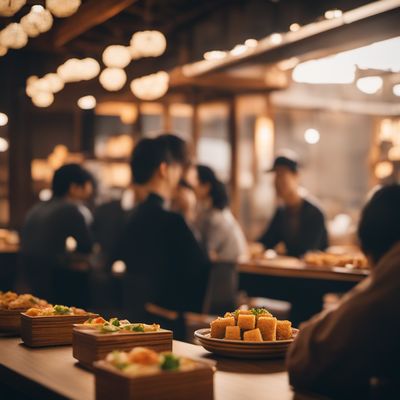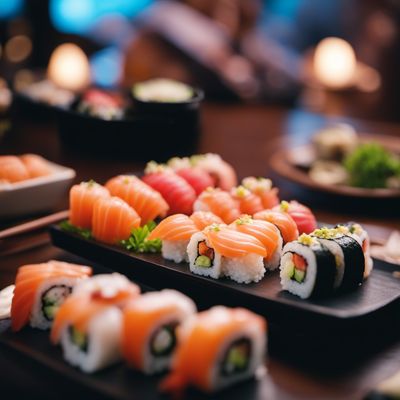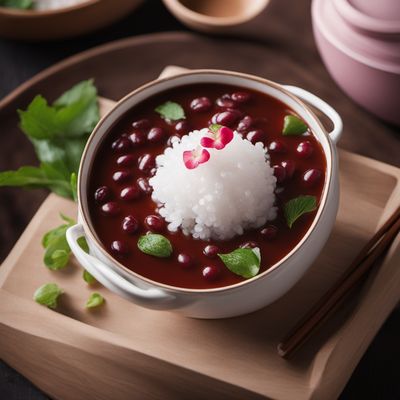
Recipe
Wanko Soba - A Flavorful Journey Through Japanese Cuisine
Savor the Delights of Wanko Soba: A Bite-Sized Adventure in Japanese Cuisine
4.6 out of 5
Wanko Soba is a traditional Japanese dish that originated in the Iwate Prefecture. It is a unique culinary experience where diners are served small portions of soba noodles in small bowls, encouraging them to eat as much as they can. This recipe captures the essence of Japanese cuisine, showcasing the delicate flavors and textures of Wanko Soba.
Metadata
Preparation time
20 minutes
Cooking time
10 minutes
Total time
30 minutes
Yields
4 servings
Preparation difficulty
Easy
Suitable for
Pescatarian, Dairy-free, Nut-free, Low-fat, Low-calorie
Allergens
Shellfish (if using shrimp tempura), Wheat (if using regular soba noodles)
Not suitable for
Gluten-free (unless using gluten-free soba noodles), Vegan, Vegetarian, High-protein, High-fiber
Ingredients
-
200g (7 oz) soba noodles 200g (7 oz) soba noodles
-
4 cups (950ml) dashi broth 4 cups (950ml) dashi broth
-
1/4 cup (60ml) soy sauce 1/4 cup (60ml) soy sauce
-
2 tablespoons mirin 2 tablespoons mirin
-
2 green onions, thinly sliced 2 green onions, thinly sliced
-
Tempura (shrimp, vegetables, or both), for topping Tempura (shrimp, vegetables, or both), for topping
-
Grated daikon radish, for topping Grated daikon radish, for topping
Nutrition
- Calories (kcal / KJ): 250 kcal / 1046 KJ
- Fat (total, saturated): 2g, 0.5g
- Carbohydrates (total, sugars): 50g, 5g
- Protein: 10g
- Fiber: 5g
- Salt: 2g
Preparation
-
1.Cook the soba noodles according to the package instructions. Drain and rinse under cold water.
-
2.In a saucepan, bring the dashi broth to a simmer. Add the soy sauce and mirin, and stir well.
-
3.Divide the cooked soba noodles into small bowls.
-
4.Pour the hot broth over the noodles, filling each bowl.
-
5.Top each bowl with sliced green onions, tempura, and grated daikon radish.
-
6.Serve immediately and encourage guests to eat as much as they can, refilling the bowls as needed.
Treat your ingredients with care...
- Soba noodles — Cook the noodles according to the package instructions, but be careful not to overcook them as they should have a slightly chewy texture.
- Tempura — You can use either pre-made tempura or make your own by dipping vegetables or shrimp in a light batter and frying until crispy.
- Grated daikon radish — Use a grater to grate the daikon radish just before serving to maintain its freshness and crispness.
Tips & Tricks
- To enhance the flavor of the broth, you can add a small piece of kombu (dried kelp) while simmering the dashi broth.
- Encourage guests to slurp the noodles, as it is considered a sign of enjoyment in Japanese culture.
- Experiment with different toppings such as tempura flakes, sesame seeds, or shredded nori for added texture and flavor.
- Serve Wanko Soba alongside a variety of small side dishes to create a well-rounded meal.
- If you can't find dashi broth, you can substitute it with a mixture of vegetable broth and soy sauce for a vegetarian version.
Serving advice
Serve Wanko Soba in small bowls, allowing guests to refill their bowls as they eat. Encourage a lively and interactive dining experience by engaging in friendly competition to see who can eat the most bowls.
Presentation advice
Arrange the bowls of Wanko Soba on a large platter, garnished with additional green onions and grated daikon radish. This not only adds visual appeal but also allows guests to easily access the toppings for refills.
More recipes...
For Wanko soba
More Japanese cuisine dishes » Browse all

Atsuage
Atsuage is a Japanese dish made from deep-fried tofu. The dish is typically served as a side dish or snack and is popular in Japan.

Temarizushi
Handmade Ball Sushi
Temarizushi is a type of sushi that is made by hand.

Tokushima ramen
Tokushima-style Ramen Noodle Soup
Tokushima ramen is a type of ramen that originated in Tokushima, Japan. It is known for its rich and flavorful tonkotsu broth and thick, chewy noodles.




